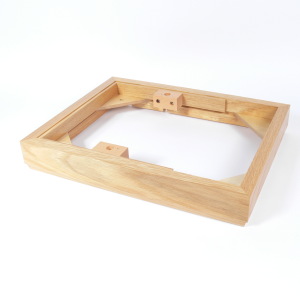OLD SCHOOL HI DEFINITION
Tuesday, 16th December 2014
Readers of my column in Connected magazine will know that over the last eighteen months I have been discovering recordings from the 'Golden Age of stereo' dating back to the 1950s and 1960s. Whilst I'm still collecting and listening to CDs, most recently (probably to do with the longer nights) I've been turning my attention to my Home Cinema system and watching movies.
 The system I listen to my music on is a surround-sound system that doubles as a Home Cinema, connecting to a plasma display. As well as enjoying Hollywood blockbusters as much as the next person, I have a particular penchant for classic films from the 1920s to the 1950s. One question I get asked by non Hi-Fi friends is why I've put together a high definition system with Blu-ray player and HD screen when all I watch is 'old films'. The usual question is "surely they weren't filmed in HD?" Yes, it's true that old films weren't filmed in HD video, but many people fail to realise that the 35mm film that movies were shot on from their inception in the 1890s to just a couple of years ago has always been high definition. Quite simply, there's more detail and more information in a frame of film than there is in a frame of 1080p HD video. Only with the introduction of the new 4K HD format, which has four times the resolution of 1080p HD video, are we approximating the resolution of 35mm film.
The system I listen to my music on is a surround-sound system that doubles as a Home Cinema, connecting to a plasma display. As well as enjoying Hollywood blockbusters as much as the next person, I have a particular penchant for classic films from the 1920s to the 1950s. One question I get asked by non Hi-Fi friends is why I've put together a high definition system with Blu-ray player and HD screen when all I watch is 'old films'. The usual question is "surely they weren't filmed in HD?" Yes, it's true that old films weren't filmed in HD video, but many people fail to realise that the 35mm film that movies were shot on from their inception in the 1890s to just a couple of years ago has always been high definition. Quite simply, there's more detail and more information in a frame of film than there is in a frame of 1080p HD video. Only with the introduction of the new 4K HD format, which has four times the resolution of 1080p HD video, are we approximating the resolution of 35mm film.So what does this mean for watching films at home? Assuming that they have been properly manufactured, exposed, developed and printed, 35mm film stocks have always had more resolution capability than the current 1080p HD video images. And assuming either the original film negatives or prints made directly from the negatives are used in creating the discs, well mastered Blu-rays of classic films have the potential to look stunning on a well set-up system. Of course the down side of this is that damage in seventy-year old prints can be highlighted in a high definition transfer, but some of this can be mitigated with careful (and not over-zealous) digital clean-up. Rather than dismissing older films, it's worth seeking out some good examples on Blu-ray and seeing just how good they can look.
I mentioned above the importance of having a well set-up system; a couple of months ago I had an engineer out to properly calibrate my TV. It's something I'd been thinking about for a while, having got my infrastructure pretty well sorted. Professional calibrators have access to hidden TV menus to allow very detailed image adjustment, and most of the adjustments are made with a type of camera positioned close to the screen which measures colour, contrast and brightness via professional calibration software. The upshot of the three hours calibration was a very big step up in picture quality; images were clearer, with plenty of 'pop' and lots of detail in the darkest portions of the picture. In my experience, professional calibration is well worthwhile - just make sure you've got your cabling sorted out first!
First published in Connected magazine, issue 29, Winter 2014/15ntent.
Written By John Armer






















